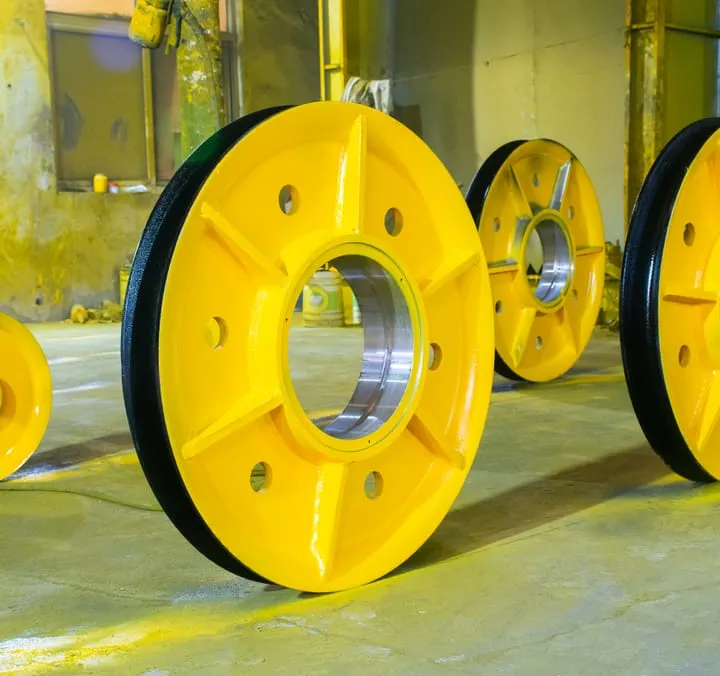The characteristics of a 10-inch pulley can vary depending on the specific design and material of the pulley, as well as the intended application. However, here are some general characteristics that may apply to a 10-inch pulley:
- Size: A 10-inch pulley will have a diameter of 10 inches, which is a medium to large size for a pulley.
- Load capacity: The load capacity of a 10-inch pulley will depend on the material and design of the pulley. For example, a steel pulley will generally have a higher load capacity than a plastic pulley.
- Speed: The speed at which a 10-inch pulley can rotate will depend on the rotational speed of the input shaft, as well as the design of the pulley and any associated belts or chains.
- Belt or chain compatibility: The size of a pulley can affect the type and size of the belts or chains that can be used with it. A 10-inch pulley will generally require a corresponding belt or chain size.
- Versatility: A 10-inch pulley can be used in a variety of applications, from industrial machinery to automotive engines.
- Efficiency: The efficiency of a pulley system can be affected by the size of the pulley. In general, larger pulleys are more efficient than smaller pulleys because they allow for a larger contact surface with the belt or chain, which reduces friction and slippage.
It’s important to note that these characteristics are general and may not apply to all 10-inch pulleys. The specific characteristics of a pulley will depend on the design, material, and intended use of the pulley.
The material of a ten-inch pulley can vary depending on the specific application and requirements. Common materials used for pulleys include steel, cast iron, aluminum, brass, and plastics such as nylon or acetal.
- Steel is a popular material for pulleys because it is strong, durable, and can handle high loads. Cast iron is also strong and durable, but is more brittle than steel and may not be suitable for high-speed applications.
- Aluminum is a lightweight material that can be used in applications where weight is a concern. However, it may not be as strong as steel or cast iron and may not be suitable for high-load applications.
- Brass is a corrosion-resistant material that is often used in marine or coastal applications. It is also a good conductor of electricity and can be used in electrical applications.
- Plastics such as nylon or acetal are lightweight, corrosion-resistant, and can handle moderate loads. They are often used in applications where weight or noise is a concern, such as in office equipment or home appliances.
- Cast iron pulley has many characteristics. Overall, cast iron pulleys are a strong, durable, and cost-effective choice for a wide range of industrial applications, particularly those that require high strength, durability, and resistance to corrosion and high temperatures.
The specific material used for a ten-inch pulley will depend on the intended application and the requirements for load capacity, speed, and durability.
CONTINUE READING
Related Posts
In the world of industrial manufacturing, the efficiency and reliability of transmission systems are critical to the success of any […]
In industrial settings, a smooth and quiet power transmission system is crucial for productivity, safety, and worker comfort. V Belt […]
Splines play a critical role in mechanical power transmission systems, enabling rotational motion and torque transfer between mating components. These […]





